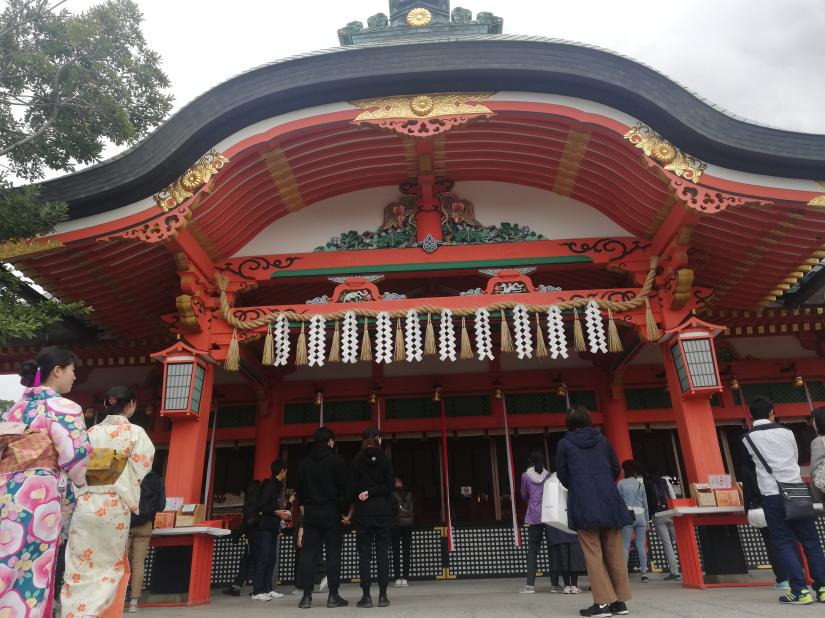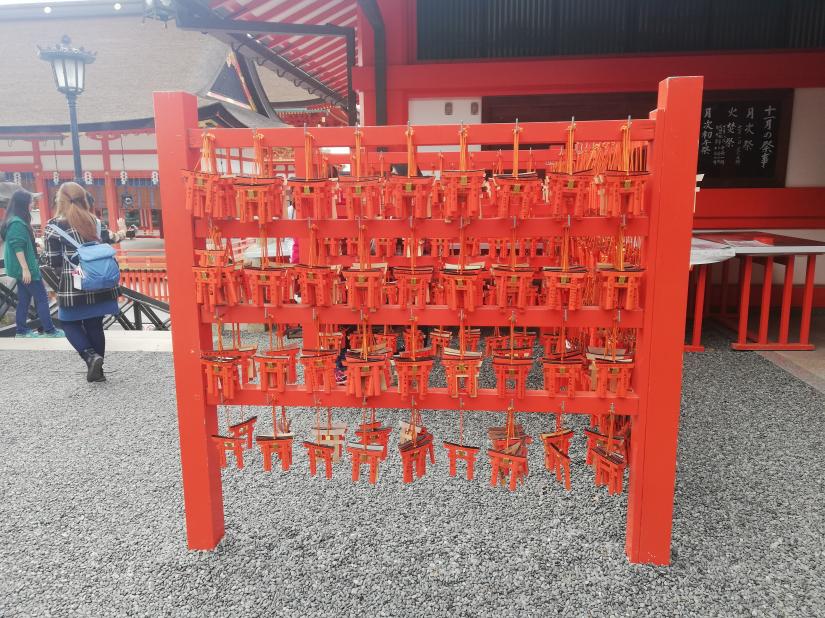 Japan more than lives up to its reputation of being the cleanest country in the world. When I stepped into Kyoto, the former capital, I was a deer caught in headlights with the meticulously neat streets, systematic transport, compact houses, flashy cars and most importantly the cornucopia of trains that is vital for your everyday commute if you don’t wish to go bankrupt.
Japan more than lives up to its reputation of being the cleanest country in the world. When I stepped into Kyoto, the former capital, I was a deer caught in headlights with the meticulously neat streets, systematic transport, compact houses, flashy cars and most importantly the cornucopia of trains that is vital for your everyday commute if you don’t wish to go bankrupt.
Unfortunately, seven days in Kyoto is just not enough if you are attending a conference that takes up eight hours of your day. However, I did get to visit a few places and each of them were nothing short of breathtaking. It’s truly a fascinating city; the perfect blend of modern and traditional.
The Fushimi-Inari Taisha shrine had been sitting in my bucket list for quite some. Located at the base of Mount Inariayama, it’s a shrine with over 10,000 gates and uncountable little shrines in its compound, built in the honor of Inari, the Shinto god of rice.
 The thing that awed me most about this shrine was its bright orange gates, known as Toriis. Now Toriis are very common in Shinto shrines but what makes the ones at Fushimi Inari truly special is the pathway of 1000 vermillion Toriis known as Senbon Toriis up the mountain.
The thing that awed me most about this shrine was its bright orange gates, known as Toriis. Now Toriis are very common in Shinto shrines but what makes the ones at Fushimi Inari truly special is the pathway of 1000 vermillion Toriis known as Senbon Toriis up the mountain.
Interestingly enough, Inari was the goddess of rice, but it was the businessmen of Imperial Japan that donated these gates to thank the goddess for prosperity or for a wish to come to true. So when you are walking up the mountain and see Japanese writing on these ginormous gates, you are probably seeing a thank you note or wish by a businessman from somewhere around 711 AD.
 Depending on where you are staying in Kyoto, you can take a bus or a train to the shrine without breaking your bank and there is no entry fee. It might be a little crowded but that is to be expected given how popular the site is.
Depending on where you are staying in Kyoto, you can take a bus or a train to the shrine without breaking your bank and there is no entry fee. It might be a little crowded but that is to be expected given how popular the site is.
The first thing you do when you enter through the large gate is purify yourself with the holy water in the little well at the bottom of the steps leading upto the shrine. The idea is to purify yourself before stepping onto the holy grounds. There is nothing freaky or intimidating about the whole process s— just walk up to the well, follow the instructions (with illustrations) on the board and voila you are purified.
Once you are done purifying yourself, just walk up the main shrine at the center. Two foxes with keys in their mouth stand sentry at either side of the shrine; stone guardians of the ancient shrine. The foxes or ‘kitsunes’ are very common in Inari temples. They are the messengers and guardians of the shrine and carry the keys to the rice granaries in their mouth and you will be seeing a lot of them throughout the compound.
 The main shrine itself is a sight to behold. The bright orange structure with little touches of green and gold teems with the culture and heritage of ancient Japan. You can walk to the front and ring the gong and pray from the outside if you are looking for a spiritual experience.
The main shrine itself is a sight to behold. The bright orange structure with little touches of green and gold teems with the culture and heritage of ancient Japan. You can walk to the front and ring the gong and pray from the outside if you are looking for a spiritual experience.
If you aren’t super religious, like yours truly, just enjoy the view of the main shrine and the little ones near it and walk up the stairs towards the Toriis.
The feeling of walking through the tunnel of Toriis, bathed in orange light with the sun peeking at you through the gaps, surrounded by green trees is an otherworldly experience. On the way up, you are likely to stumble upon a little souvenir shop or a shrine that will give you a taste of true Japanese culture.
If you are planning to trek all the way to the top of the shrine then be prepared to spend about four hours going up and down. I have only been able to go halfway up given the time constraint. However, there isn’t really too much or too little. You can climb up as far as you want and it will still be a memorable one.
 Another fascinating thing about the shrine is they sell little wooden Toriis where you can write down your wish and hang it at a particular place to fulfill your wishes. Throughout the trek up the shrine, hundreds of these can be seen at different places.
Another fascinating thing about the shrine is they sell little wooden Toriis where you can write down your wish and hang it at a particular place to fulfill your wishes. Throughout the trek up the shrine, hundreds of these can be seen at different places.
If you plan to buy souvenirs you won’t be disappointed. The prices are a little steep but totally worth it. And if you are visiting the shrine, do not leave without trying the street food on the way. The mochis (rice cakes) with grilled mozzarella cheese? To die for!
If you love temples, history and nature like me, the well-preserved Fushimi Inari Taisha will not disappoint you. It’s stunningly beautiful and serene and be rest assured the visit will give make you see Japanese culture and history in a whole new light. And the rest of the places I visited? That’s a story for another day!


